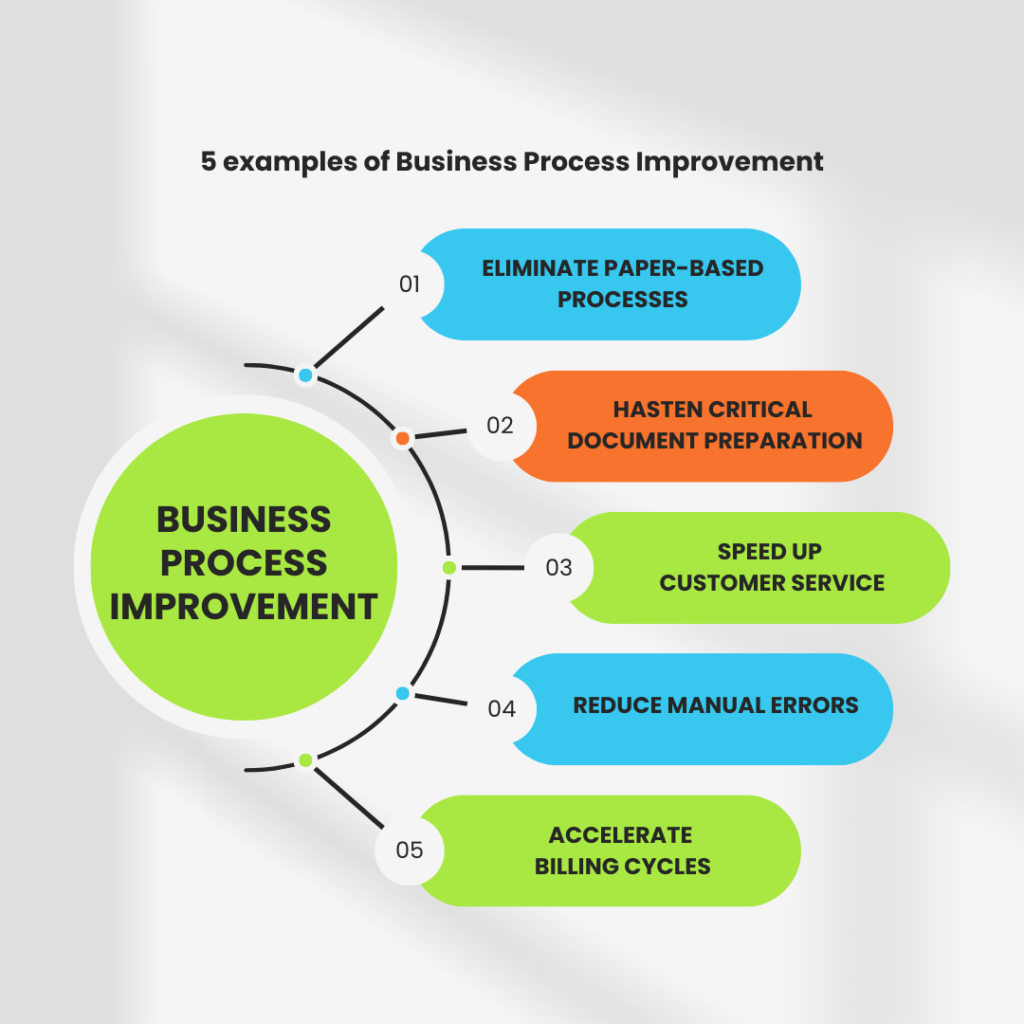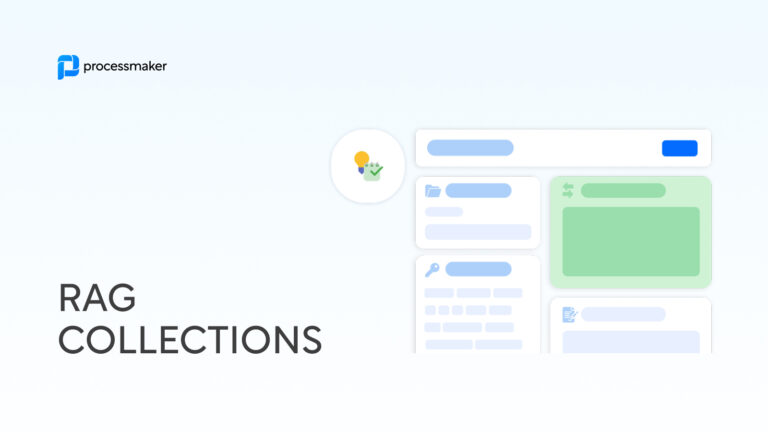How can we meet our revenue goals quickly? What changes do we need to make to cut down on operational costs? These are the questions managers mull over every day. But to make these changes, a surprising number of organizations still rely on guesswork. That notion is worsened by the fact that most managers can only recall 40% of the work their teams perform. Unmonitored and untracked business processes leave space for tasks to fall through the cracks. It leads to projects that take too long, bloat with errors, and blindly pile up with too many redundant tasks. But rest assured, there’s a silver lining. To combat these issues, your organization can seek out business process improvement solutions, which are only strengthened by intelligent automation, or hyperautomation. Talk to one of our business process improvement consultants
Platform Solutions
See for yourself! Try out the latest features of ProcessMaker Platform for free.
See for yourself! Try out the latest features of ProcessMaker Platform for free.
What is business process improvement?
Business process improvement is all about refinement. You can observe and log how your team performs activities so you can optimize, optimize, optimize—all in an effort to find a quicker, more efficient way to reach your goals. Without keeping track of tasks, it’s impossible to discover where roadblocks lie, reveal duplicate tasks, or unearth new opportunities for automation. So, what are some of the top goals of business process improvement?
- Cut down on the time or cost involved in performing tasks
- Find a faster way to meet a revenue, quality, or productivity goal
- Explore new ways to serve customers with a more delightful, loyalty-boosting experience
Let’s dive into some of the top ways organizations use business process improvement to shore up their operations. Still think that the manual input of vital records is easier for your team? Don’t let artifacts of traditional ways of doing things cloud your digital transformation. Unmonitored types of business processes don’t only gum up efficiency but they can be costly—and embarrassing. A simple formatting error on an Excel spreadsheet led the British Secret Service to apply for wiretaps on thousands of incorrect phone lines. Here are five ways organizations are taking a fresh look at their business processes to find better, simpler ways to run their everyday operations.
Eliminate paper-based processes
Stacks of unnecessary paperwork are one of the chief efficiency drains. The research experts at McKinsey estimate that workers spend 20% of their day searching for and gathering information. That’s 9.3 hours per week—more than a complete workday—bumbling through frivolous stacks of paperwork, which does nothing to reduce waste. Consider CUNY School of Law. Their student experience involved a lot of paper forms, walking around to exchange documents, and tons of back and forth between offices to track down signatures. With so many off-record procedures for performing tasks, there was no system of accountability in place. Enter automation: CUNY School of Law decided to fold all of these time-consuming tasks into a digital application. Students can fill out the necessary forms online, and it’s automatically passed between stakeholders for approval. The system instantly prompts action from the student if more information is needed. The entire process is now conducted electronically, cutting out manual paper shuffling and serving up a student experience that delights.
Hasten critical document preparation
Workers spend one-third of their time preparing data for reports. They’re pulling survey data, log files, social media analytics, and other information into spreadsheets and presentations. While this information is vital for decision-making purposes, it’s marred by efficiency drains like manually migrating data between systems. Smart organizations use business process improvement methods to expedite the document prep process and take advantage of burgeoning insights and opportunities more quickly. Take a look at the insurance agency Maury, Donnelly & Parr: they were so busy transferring information between emails, PDFs, and Excel spreadsheets by hand (and fixing the consequential human errors!) that they could not focus on their core competencies. Maury, Donnelly & Parr used business process improvement to reduce human errors by 75% when it came to generating proposals. The software automatically fills out form templates and quality checks for errors. The time required to produce a proposal used to take 45 minutes, but with streamlined processes in place, they can now do it in 7–12 minutes.

Speed up customer service
According to a study by Microsoft, 90% of Americans decide whether to do business with a company based on their customer service experience. Slow, manual, and maze-like reactions to user issues can tank important factors like Net Promoter Score and gradually hack away at your bottom line. Organizations are implementing strong improvements to their workflow automation in order to provide a stunning level of service that keeps customers coming back. Take a look at Adecco Colombia, a telco that experienced this very issue. When customers phoned in for assistance, staffers took manual notes in Excel. There was no standardization for collecting information—everyone had their own method. Mistyped numbers, improperly formatted fields, or accidentally deleted cells led to service delays. Adecco Colombia decided to improve this process by using automated workflows. Now, when a customer calls in for help, a support analyst fills out a handy form. This guarantees that they gather the right information from a customer that a technician will need to solve the problem. Submitting this form kicks off a sequence of workflow events—supervisors are informed of new ticket assignments, they receive updates on their progress, and everyone, including the customer, receives an email once the issue is resolved. Now, they have impeccable customer satisfaction across the organization.
Reduce manual errors
Research by the Institute of Management Accountants reveals that 60% of companies are still using Excel in place of an ERP. If this doesn’t sound like a cause for concern, consider this: the University of Hawaii reports that 90% of spreadsheets contain errors. While this doesn’t pose much of an issue for family spending and holiday card invitation lists, organizations that rely on millions of cells to forecast revenue or balance budgets are at significant risk. Telecom provider Telefónica CAM used Excel to process new business account subscriptions—up to 100 per day. Each of these required a staffer to manually create 20 new accounts. That’s 2,000 accounts per day, whose accuracy relied on data manually re-entered between spreadsheets and legacy software. If you look at it through the lens of the University of Hawaii research, you’ll find a hotbed for potential errors. So Telefónica CAM decided to make a change. Now, the account creation process for mobile, internet, landline, and cloud services is fully automated. When a client signs up for a service, their information is automatically routed through an approval process. Contracts are fully automated from start to finish, ensuring that customer profiles and accounting data are 100% accurate each and every time.
See for yourself! Try out the latest features of ProcessMaker Platform for free.
Accelerate billing cycles
Errant keystrokes aren’t trivial incidents. One copy-and-paste gaffe was the reason behind a $6.5 billion reporting error for financial services giant JP Morgan Chase. It wasn’t just a record-keeping issue—the misstep cost the firm $600 million in fines. Digitization is a must-do for businesses where processing financials promptly means more revenue. Consider StoneGate Senior Living. To receive Medicaid funding for a resident’s stay, they needed to submit a batch of paperwork to the state. Once the team admits a resident into their facilities, a critical clock starts to tick—they only have 30 days to organize, prepare, and submit the application for care reimbursement. If a form fell through the cracks or languished on an approver’s desk, StoneGate had to foot the entire bill until they could rectify the matter. StoneGate Senior Living couldn’t risk any missteps. It was imperative to their bottom line that forms were submitted within the regulatory timeframe. To improve this process, they decided to digitize the entire application procedure. Online forms streamlined the initial application. As forms passed various checkpoints in the system, they were automatically transferred to the right staffer for review. If any information was missing, the system would instantly flag the problem and inform the necessary team members. New workflows reduced outstanding billing issues by 25%, securing StoneGate’s revenue flow. Business process improvement is continuous—there’s always a better, brighter, and easier way to get things done. By looking at your processes with a keen eye for efficiency, cost, and time reduction, you can start to turn the productivity tides in your favor. There are several platforms you can use for process automation with a wide variety of innovative features. And with that being said, different platforms might work better for your business and goals than others. Nonetheless, we want to help you find the right fit. Chat with one of our experts to learn more.





